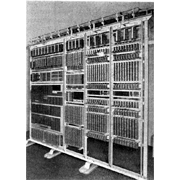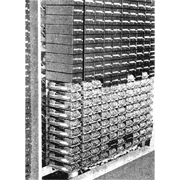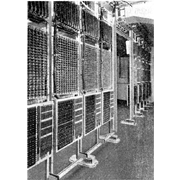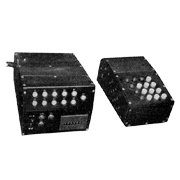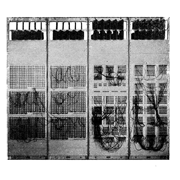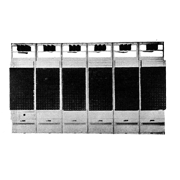Published on Jun. 1, 2006
Last updated on Jul. 8, 2023
Yamashita Hideo and other researchers at the Tokyo Imperial University researched and developed this statistical machine immediately after the war in 1948. Prior to the war, researchers relied on American-made punched-card statistical machines, but in the 1940s it became impossible to import these machines. Furthermore, the paper cards used in these card-based statistical machines had to be of very high quality (in terms of precision and durability) and were difficult to manufacture at the time domestically. Nakagawa Tomonaga from Bureau of Statistics, Japanese Govorment asked Yamashita if he could make a statistical machine that did not use punched cards. Ono Katsuji (Nagoya Imperial University), his student Sato Ryosaku, and others came up with a design for a new statistical machine that did not use punched cards. Although in the pre-war years, researchers concentrated on pure research and the conditions made it difficult to prototype machines, this team managed to build a prototype model with the help of the Mitsui Houon-Kai and Shimazu Yasujiro of NEC. Interest increased in this area after the war and research became possible again, so Yamashita’s team worked toward realizing a prototype after numerous experiments. In 1948, they completed a practical machine that used more than 4,000 relays and more than 2,000 counting registers.
This machine worked by having a large number of operators feed in data directly from keyboards while looking at slips. The entered data were stored in registers by means of the relays and the results were displayed with a display circuit consisting of sequential counting registers. This method was a mechanized version of counting with tally marks. The machine was called Statistical Machine of Yamashita Type.
The machine was used by Chuo-tokei-sha which was formed by Nakagawa Tomonaga and Tate Minoru (from the Institute of Population Problems), to do commissioned statistical calculations for government agencies and newspapers. The Statistical Machine of Yamashita Type was commercialized by the Fuji Tsushinki Seizo and NEC. Fuji Tsushinki Seizo delivered a machine in March 1951 to Statistical Department of Metropolitan Govorment of Tokyo, and NEC delivered a machine in August of the same year to the Bureau of Statistics, Japanese Govorment. These machines were referred to as electric statistical machines or electric analysis and counting machines.



